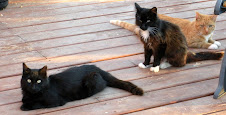Using ArchiveGrid I learned that whoever wrote the Notes and Summaries for the Sitting Bull autograph card needs to do a little more research about Sitting Bull. Shaman is an unusual term to use to refer to him and the info never uses the work Lakota. There is also a misspelling of the word Hunkpapa. Nevertheless, I found it interesting that this item is at Cornell University and also that it has been digitized. So, I clicked on the Cornell link and went to the link for past exhibitions and found "Vanishing Worlds, Enduring People" was on exhibit at the library in 2005-2006. The Native American collection was purchased from the Huntington Free Library in the Bronx, New York in 2004. The online version of the exhibit is still available and you can actually see the autograph card under the subheading Sideshow to Powwow – Sitting Bull.
For a search of my own I tried Sherlock Holmes and came up with 449 items. Browsing through I found things located in the U.S. and around the world. At the University of Minnesota, Twin Cities there is an intriguing article from the Sherlock Holmes Journal. Many other items are programs and related materials from productions of various Sherlock Holmes plays. I found this resource very easy to use and the "Contact an archivist to learn more about access to materials in this collection" box useful. The link to the University of Minnesota led me to info about two current Sherlock Holmes exhibits there – who knew they had a special collection? What a great connection for a field trip!
My Paul Revere search in CAMIO found a spoon, a sugar bowl and cover, several teapots, bowls, etc. But what is a salver? Looks like a tray and after looking it up – it is a tray for serving foods or beverages – use around 1661, derived from both French and Spanish. The results from the term Sioux included clothing, books, jewelry, artifacts such as pipes, drawings, etc. as well as photographs of Sioux Springs in Nevada. Using the term Lakota I found a painting entitled "Custer's War" by One Bull among other things. Clicking on rights gives you the info "Licensed for non-commercial, educational use" and a link to the holding institution for more info. I can see teachers and students using this resource for visuals in units and projects. For example, a history teacher might use the One Bull painting as a way to introduce the Native American point of view about the Battle of the Little Bighorn. For my favorite artist I tried Joanne Bird – nothing; Oscar Howe – nothing; Terry Redlin – nothing; Paul Goble – nothing; Edward Curtis – 161 items! Most are held by the Minneapolis Museum of Art and all are photographs, of course. Advanced Search allows you to select which collection/s to search which is a nice feature. So, how does CAMIO decide what is included? About CAMIO explains that "premier museums worldwide contribute…" Searching the artist Monet resulted in 111 works and I added four of them to my Favorites. In View Favorites all of the features are intuitive and would be useful in teaching and presenting. What a cool thing to do if you had a white board!







1 comment:
Joan, thanks for these comments. I love your willingness to dig deeper and find answers to your own questions. Do you suppose the person who wrote the note on the Sitting Bull card was from the Bronx? You should write a note to Cornell and ask them to correct the errors. We think ArchivGrid is a great resource for historical and genealogical research, and many people DO plan vacations around visiting these collections. Others have been disappointed at the lack of SD artists in CAMIO, but as you noted, it is most likely because none of the contributing institutions has their holdings. This resource does not a lot of art from the 1990-present.
Post a Comment